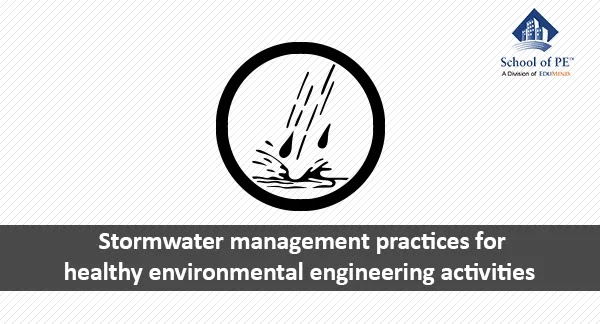Table of Contents
Introduction
The main objective of this article is to explain the
importance of stormwater management. Stormwater runoff is mainly from rains or
through melting snow that does not penetrate into the natural ground.
Stormwater collects from residential buildings, Parking lots, Asphalt
pavements, and thru Natural vegetation. Stormwater runoff collects and carries
decayed dead animals, organic waste, roadside trash, sediments due to soil
erosion and other pollutants. Earlier days, Ponds are
used effectively to manage stormwater. Stormwater management practices can be
used efficiently to prevent erosion of loose soil and as well as flooding of
wetlands. Considerable amount of groundwater quantity increases the probability
of flooding frequency, stream channel slope instability. Uncontrolled
stormwater runoff damages highway and utility infrastructure. The goal of best
stormwater management is to protect groundwater and surface water systems from
pollution for current and future generations. NPDES and EPA storm water
management practices are most important topics for PE exam and they are
thoroughly discussed in PE exam review course.

Parameters Influencing Stormwater Management practices
The need of stormwater management is to maintain water quality and quantity. Stormwater management systems should employ water treatment methods for collecting and purifying stormwater. Treated stormwater can be discharged into the natural streams or rivers. There are various methods to control stormwater runoff. Some of the methods are developing shrubs and swales, sodded ditches, and filter fabric systems. These methods are best and they are simple to construct and as well as for maintenance. Stormwater management also helps in preventing structural damages and flooding near construction sites. Stormwater runoff also considered as water resource that helps to increase groundwater table level and also natural stream levels.
Stormwater
Management Practices and Common Problems
Water Resources and Civil Engineers facing problems in
maintaining water quality with controlled turbidity levels during heavy
stormwater runoff situations. The main task of stormwater management team is to
manage retention ponds, treating the collected stormwater prior to discharge
into main stream channel without affecting existing drainage facilities. Many
agencies and local stormwater management bodies are insisted to design new
systems that keeps groundwater environmentally safe and free from pollutants. Environmental
protection of wetlands is one of the critical problem, where most of the water
resources engineers are facing. Due to global climate changes and unanticipated
high intensity of rainfall managing the flooding events is difficult task. It
is on the shoulders of water resources engineer to estimate the runoff from all
sources to design drainage facilities.Highway engineers should
provide surface runoff calculations to estimate drainage structures intake
capacity. Engineers with Professional Engineer Exam Certification will allowed
to provide design calculations for the drainage structures.
No comments :
Post a Comment